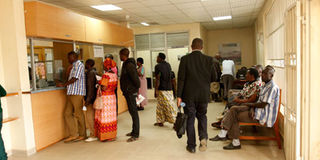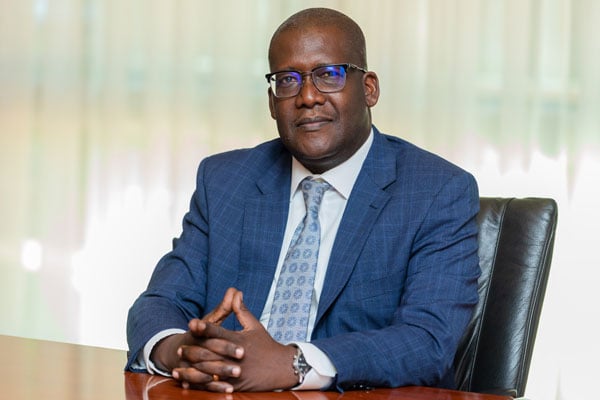Ugandan women still lack access to financial services

Customers line-up to receive money at a microfinance institution recently. In some areas, women find it hard to access financial services such as loans. FILE PHOTO
What you need to know:
- financial inclusion has been hindered by infrastructure, which is relatively expensive and difficult to maintain.
- There is need to empower women and sensitise communities on the usefulness of them having money, Dorothy Nakaweesi writes.
Scovia Naboona is a vendor on Ssebaana Kizito Road (formerly Nakivubo Place), one of the areas gazetted by Kampala Capital City Authority (KCCA) for vending.
The evening market, which is mostly comprised of food stuffs, is where Naboona, like many others converge every evening to sell fruits and vegetables.
She has been trading from here for three-years after, together with her family relocated from Sanje-Kyotera to Kampala in search for better opportunities. On average, Naboona, save about Shs10,000 daily on her sister’s mobile money as she owns no bank account.
“Initially, I used to save my money in a box [piggy bank] at home but this became a challenge because my husband would always take some of it,” she says.
She has since kept it away from her husband and he is not aware that she is saving.
“My colleagues told me to open a bank account but I have been reluctant because if my husband gets to know about it, I will be in trouble,” she shares.
This is a bitter reality that Naboona and others go through, however, she has been able to find a way through which she saves.
Many women go through such incidents, which could partly explain the slow penetration of financial inclusion.
Study
According to a 2013 FinScope survey, more than 56 per cent of adults use mobile phone services. However, only 34 per cent of these are registered with service providers, which means that a significant portion of the mobile money users access the services through third party accounts.
The findings further shows that utilisation of mobile money was higher amongst males than females and higher in urban than in rural areas. The survey results revealed that majority of Ugandans mainly use mobile money services for cash withdraws (56 per cent), followed by cash deposits (27 per cent).
Usage of mobile money services for other services like payment for utilities, school fees, and purchase of airtime, the report indicates, remains low.
With the exclusion of mobile money, which is largely used for money transfers and not for financial intermediation, formal financial inclusion in Uganda remains low when compared with other countries such as South Africa, Namibia, Swaziland and Kenya where similar FinScope studies have been carried out.
Unfortunately, according to another financial inclusion insights (2016), women are less likely to own mobile phones and be active users of mobile money.
According to the report, out of 63 per cent of mobile money users, 38 per cent are men and 25 per cent women.
This, according to experts is an indication that many people, who save use informal services .
Gender gap
Experts also indicate there is a sizeable gender disparity, which is emphasized by rural/urban or educational backgrounds.
This therefore, calls for the promotion of pro-poor to lift the majority of the population out of poverty.
According to Ms Jacqueline Muna Musiitwa, the executive director Financial Sector Deepening Uganda, low mobile phone ownership could be a social cultural issue that puts down women in terms of property ownership.
However, she says, Uganda should benchmark its financial inclusion on countries such as India that have managed to entrench it among women and rural communities through technology and digitalisation.
“I believe if this is done there will be a jump in the number of women who get included [access to financial inclusion],” she says.
This, she says, can be conducted with other measures such as agency banking to extend financial inclusion.
Culture, according to Vincent Tumwijukye, the chief executive officer of Future Link Technologies, a FinTech company which works towards removing closing financial inclusion gaps, has largely been a factor in the exclusion of women in access to financial services.
“Women fear to appear at financial Institutions because their husbands will assume they have a lot of money,” he says.
Technology
However, financial inclusion has been hindered by infrastructure, which is relatively expensive and difficult to maintain.
“We have worked towards removing the gaps that have existed in terms of infrastructure, through developing a banking switch which connects the different banks to different payment channels,” Tumwijukye says, highlighting how they have assisted to assist in terms of infrastructure.




